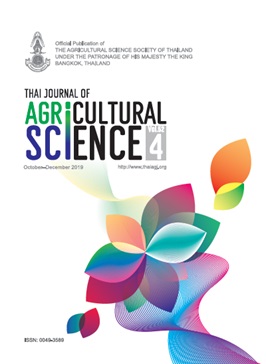Potassium Pool Equilibration in Some Calcareous Soils as Affected by Long Term Rice Cultivation Systems
Main Article Content
Abstract
To study the effect of rice cultivation systems on the equilibration among different forms of potassium, surface (0–20 cm) and subsurface (20–40 cm) horizons of paddy and adjacent non-paddy soils from 10 regions of Fars province with rice cultivation history were collected. Different soil properties and K forms including soluble, exchangeable, non-exchangeable, mineral and total K were determined. Results indicated that soluble K in paddy soils was significantly lower than non-paddy soils (4.4 vs. 7.0 mg kg-1). Non-paddy soils had higher exchangeable and non-exchangeable K than paddy soil (268 vs. 200 and 771 vs. 638 mg kg-1, respectively). Mineral and total K increased in paddy cultivation from 4399 to 5202 and from 5445 to 6044 mg kg-1, respectively. With rice cultivation, K ions were more concentrated in mineral K rather than non-paddy soils (86 vs. 81% of total K). Exchangeable K in surface horizons was higher than subsurface horizons for paddy and non-paddy soils; while this difference was not significant for other K forms. Non-exchangeable, mineral and total K was significantly correlated with illite content. It is concluded that rice cultivation decreased more available forms of K and this should be considered for K fertilizers recommendation in paddy cultivation systems.


